
Silk Is An Ancient Natural Fabric, But Is It Ethical? The Textile Test Series Investigates

We can’t begin a conversation about silk without thinking about China: Specifically a Chinese empress by the name of Leizu. Her legend goes that one afternoon, while sipping tea under the leaves of a mulberry tree, a silk cocoon fell into the empress’s teacup and she watched as the cocoon slowly unraveled its bright, shiny, and strong secret to her. The cocoons of the mulberry’s companion were enveloped with what is still considered one of the world’s finest fabrics. This discovery led her to inventing an idea which is the silk loom and other methods of silk harvesting. For thousands of years after its discovery, sericulture—the practice of cultivating, breeding and rearing silkworms—remained a female-only craft in Chinese culture.
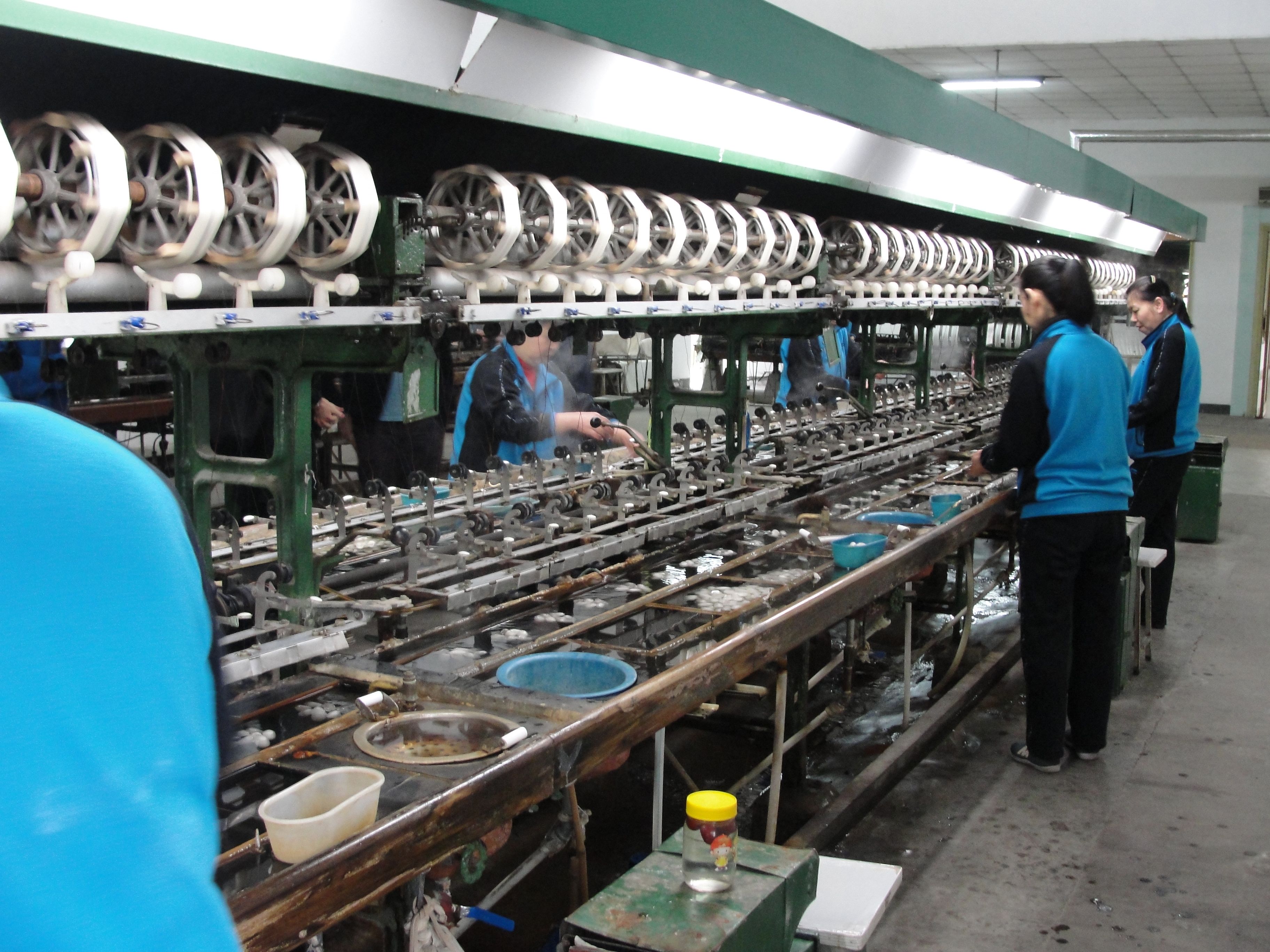
Modern-day silk-making factory in Suzhou, China. Image by Starre Vartan.
Thousands of years after Empress Leizu’s discovery, China kept the secret to silk-making away from the world while exporting the fabric all over Eurasia—and the world couldn’t get enough of it. Silk’s luxurious lightness and beauty were instrumental in building the infamous Silk Road that traversed thousands of miles across Africa, Europe, and East Asia.
The legends about silk are abundant and based on some historical fact. There were multiple attempts to ban its use in ancient Rome as some officials found its clinginess indecent for a woman’s body. And ancient Mongolian warriors wore silk shirts under their armor because the fibers of the cloth would help with the expedient removal of arrows that may have lodged in their bodies during battle. Silk was also a favorite of royals, and still reigns as one the most supreme and luxurious fabrics sought after today.
But what exactly is silk? And even though it’s natural, is it a sustainable fabric?
How Silk is Made:

Silkworm and silk cocoon. Image by P. Gebelli
Though there are other breeds of silk available to purchase, Mulberry silk, the traditional kind invented in China those thousands of years ago, makes up about 90% of silk production today. And though China still clings to the number one spot, the second largest silk production market in the world is in India. There, silk is used to make a variety of garments and home goods, including the beautiful formal saris worn by Indian women for special occasions such as weddings and parties.
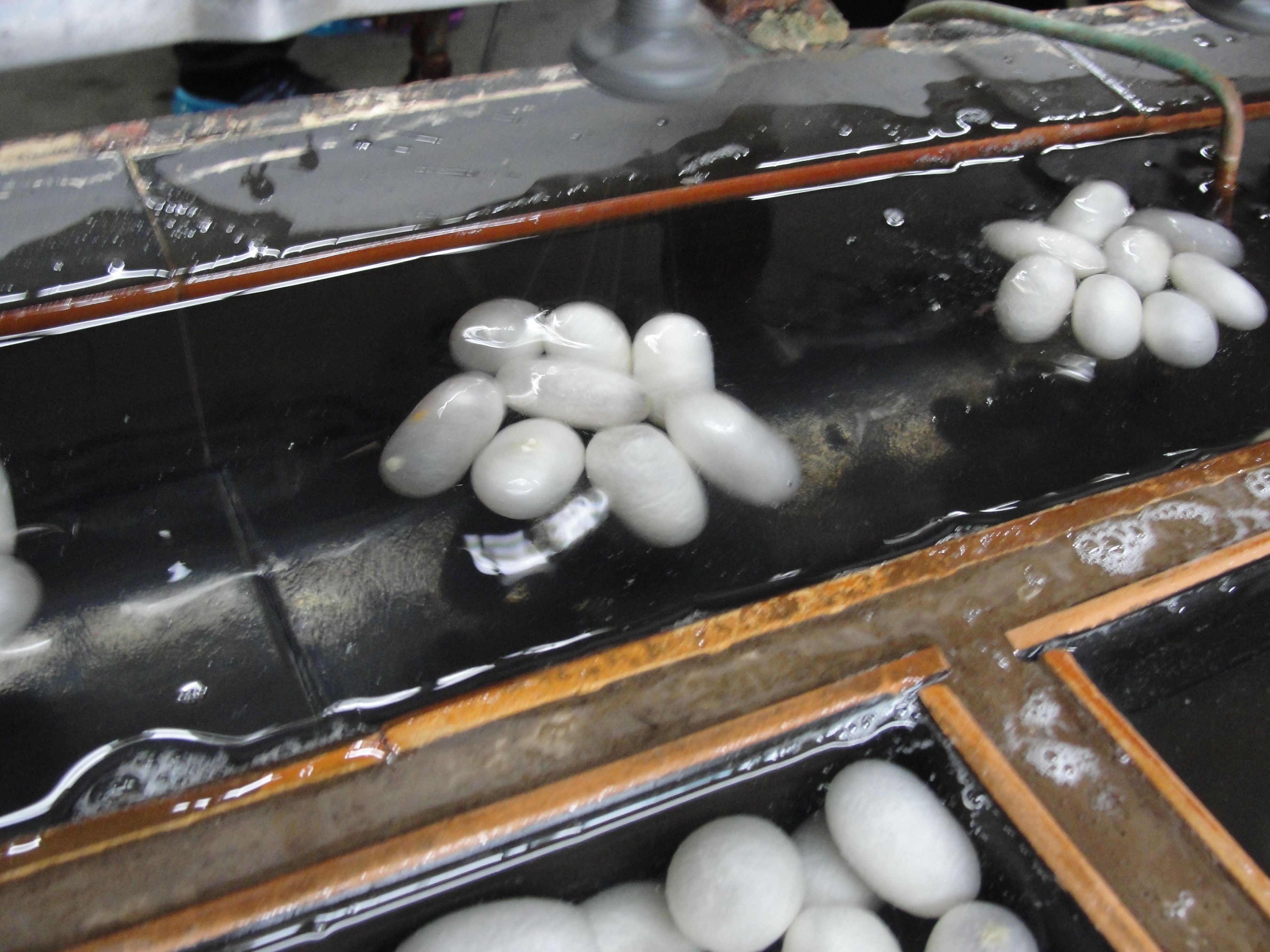
Silkworm cocoons being processed in Suzhou, China. Image by Starre Vartan
The process begins with the Mulberry tree. Silk worms feed exclusively on the leaves of the white mulberry tree and spin themselves into a cocoon of long and silky thread. These cocoons are then bathed in warm/hot water (killing the worm inside) which loosens the long singular thread from the cocoon. That’s right, each cocoon is made from one long thread. Depending on the form of silk production, whether industrial or small batch, the silk worm’s threads are then spun into a white or ivory silk fabric that is ready to take on a plethora of colors.
You can watch a video on silk making below, or read up on a (beautifully lyrical) long description.
Sericulturists have developed other ways to enjoy silk. Organic silk is a method with which the mulberry trees and silkworms are raised without pesticides and any additives that may harm humans or the environment. This guarantees that the yarn is naturally strong and safe to use for everyone.
Red Flags:
Unfortunately, silk is not a vegan-friendly fabric. The process requires that the silk worm lose its life and does not mature to the next phase of its life as a moth. In the natural system, in order to emerge from its cocoon, a silk worm must burn a whole through the large silk thread that it has wrapped itself in.
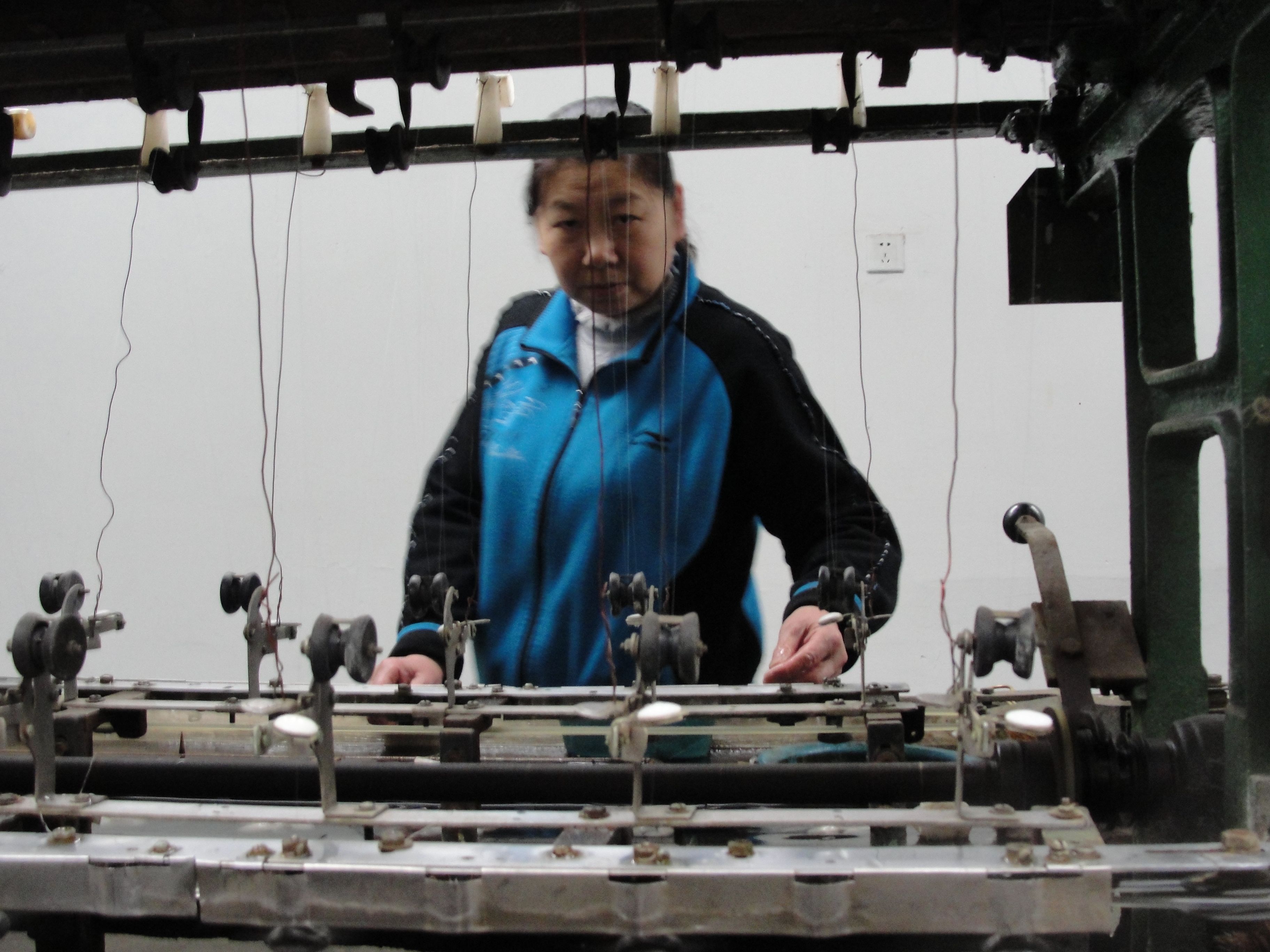
A woman at a silk factory in Suzhou, China, separates the silk strands so they can be woven into fabric. Image by Starre Vartan.
This damages the silk thread and makes it hard to harvest. Though there is a push to have different production methods that honor both the silk and the larvae, this still leads to a considerable loss of life for the silk worm. Yet, silk remains one of our most natural and luxurious fabrics, and ideas like “peace silk” are moving sericulture forward.
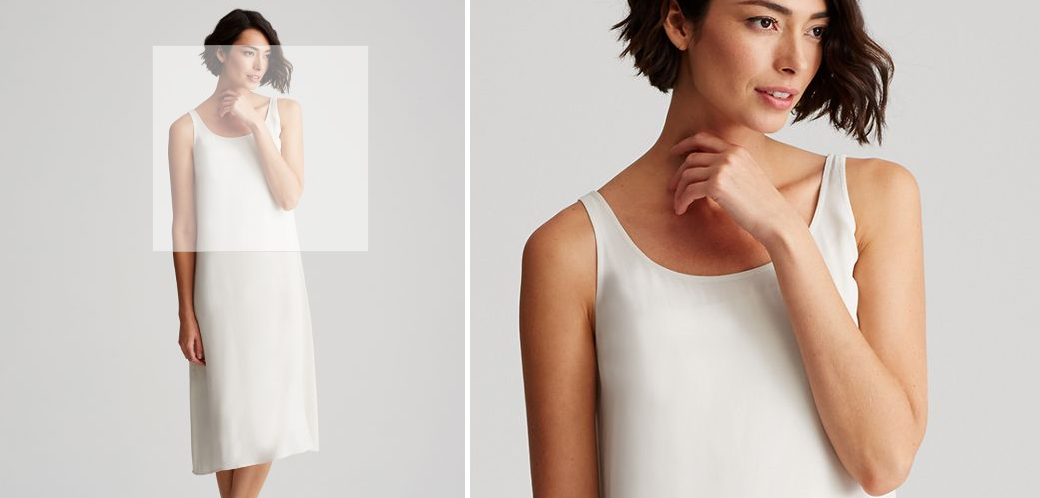
Whether peace silk or not, what happens after the silk is made into a fabric has a huge impact on its sustainability. It can be dyed with conventional toxic dyes, or natural, low-impact or botanical dyes can be used, which most ethical designers will use (like the Eileen Fisher tank dress, above).
Silk is a very durable fabric, keeping the body cool in hot weather and warm in the cold (if you’ve ever worn silk underwear while skiing you know what I mean). It can last for decades in one’s own closet—Eco-Chick’s editor has a number of and knit super-thin or more thickly. Silk-mix fabrics are very popular; and silk/linen and silk/organic cotton pairings are particularly wonderful, and all-natural too. And silk can also be used to make bedding (see below) household items, and art.
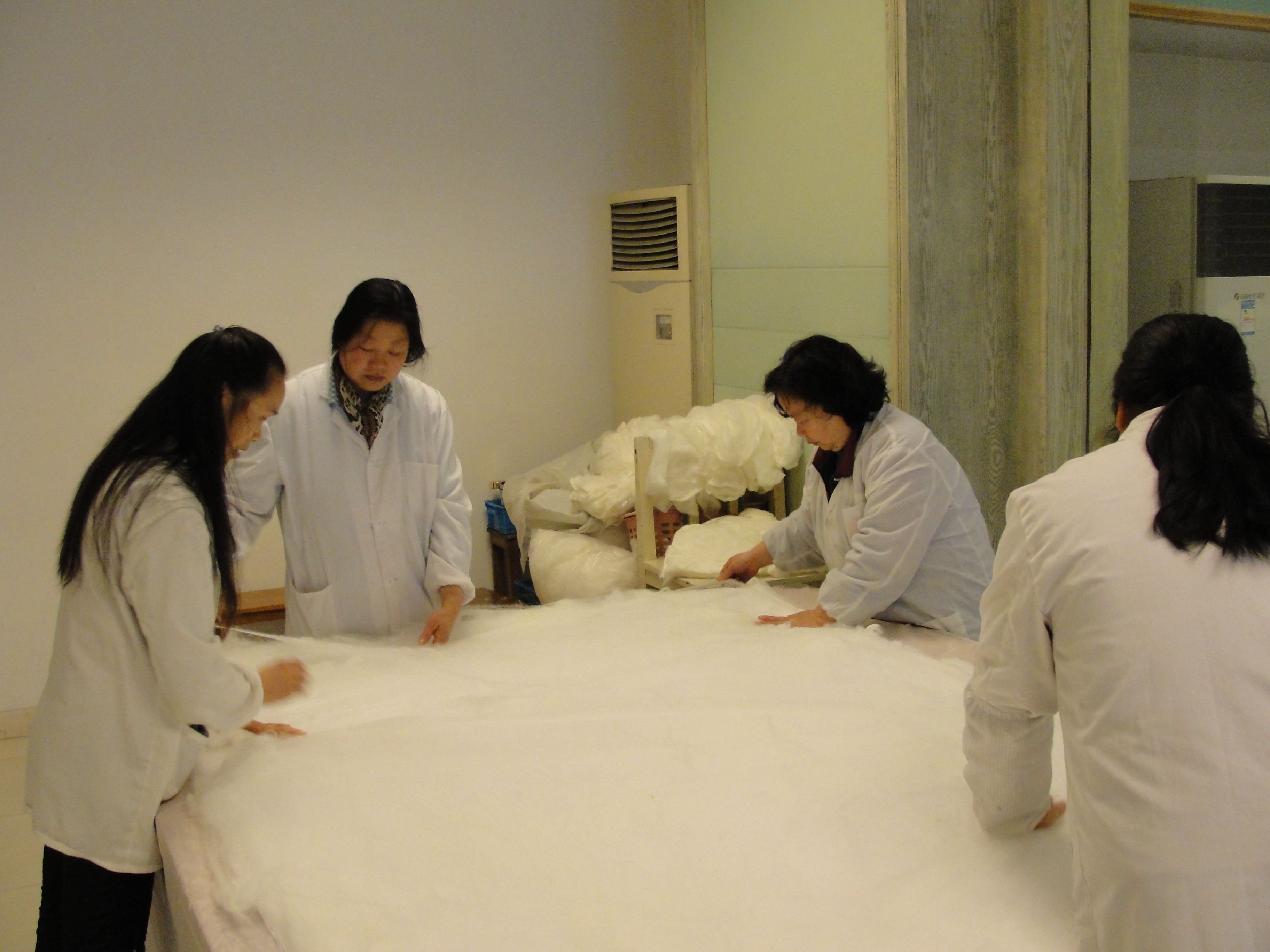
Women in a silk factory in Suzhou, China, stretch silk threads by hand for a duvet. Image by Starre Vartan.
At the end of life, silk, as a natural material, is totally biodegradable, making that part of its life cycle a very sustainable choice.
Verdict: Silk is not a good choice for vegans, but for others, silk can be a very ethical, sustainable fabric, due to the fairly low impact of the silk-creation and production process. How it is dyed will impact how sustainable the silk is, and where it is made matters (like all clothing). A piece of clothing is never ethical if it is made by people who aren’t paid a fair wage or if child labor is involved.
Read up on other fabrics in our Textile Test Series below:
Is Tencel (Lyocell) an eco-friendly fabric?
Is Bamboo a Sustainable Textile Fraud?
What Does Made in the USA Really Mean?




